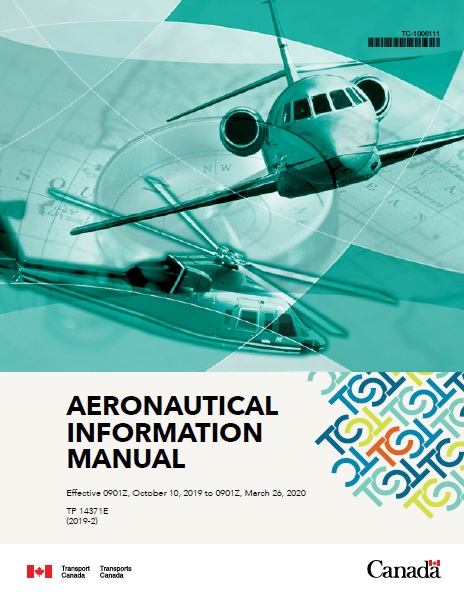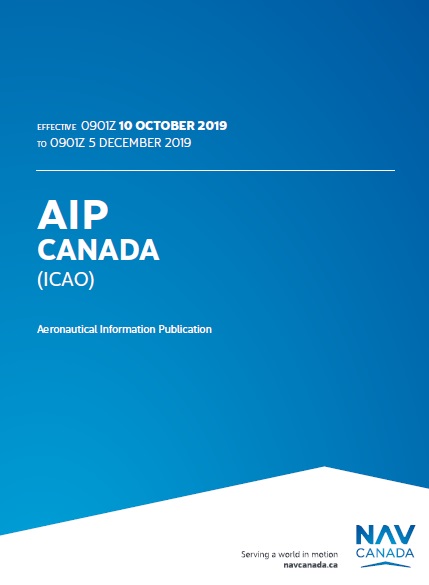by NAV CANADA
In Canada, pre-flight and in-flight information necessary for the safe and efficient movement of aircraft in Canadian airspace can be found in the AIP Canada ICAO. Conversely, educational reference material that may be useful to pilots is normally published in the Transport Canada Aeronautical Information Manual (TC AIM).
International Civil Aviation Organization (ICAO) Annex 15 identifies that AIPs are intended primarily to satisfy requirements for the exchange of aeronautical information of a lasting character essential to air navigation.
AIP Canada (ICAO) is published and disseminated by NAV CANADA and constitutes the basic source for Canadian aeronautical information. AIP Canada (ICAO) consists of:
- Part 1—General (GEN)
- Part 2—Enroute (ENR)
- Part 3—Aerodromes (AD)
- Part 4— AIP Canada (ICAO) Supplements
- Part 5—Aeronautical Information Circulars (AIC)
- NOTAM
Each of these parts of AIP Canada (ICAO) contains information relevant to aircraft operation in Canadian airspace. For example, AICs offer the chance to learn about new or changing system elements ahead of time, whereas AIP Supplements contain things like graphics that wouldn’t fit into a traditional NOTAM, or perhaps details for long-term temporary items such as construction cranes.
Small countries that only have a few airports can publish all their necessary aeronautical information in an integrated AIP. In Canada, an integrated AIP could be somewhat cumbersome to use airborne, so the following extracts from AIP Canada (ICAO) are published separately:
- Canada Flight Supplement (CFS)
- Canada Water Aerodrome Supplement (CWAS)
- Canada Air Pilot (CAP)
- Enroute Low Altitude (LO) Charts
- Enroute High Altitude (HI) Charts
- Terminal Area Charts (TAC)
- VFR Navigation Charts (VNC)
- VFR Terminal Area Charts (VTA)
- ICAO Type A Aerodrome Obstacle Charts
- Designated Airspace Handbook (DAH)
These documents and charts form an integral part of AIP Canada (ICAO). As the use of electronic flight bags/portable electronic devices increases in Canada, it is expected that elements from these extracts will be able to be combined into a more integrated AIP. In the meantime, just because these documents are published, that doesn’t mean the GEN, ENR, and AD sections of AIP Canada (ICAO) (along with AIP supplements, AICs, and NOTAMs) aren’t just as necessary. Pilots are reminded of the importance of referring to all parts of AIP Canada (ICAO) to obtain pre-flight and in-flight information necessary for the safe and efficient movement of aircraft in Canadian airspace.
AIPs are designed to be concise, so many countries publish additional educational material containing details about the air navigation system and Canada is no different. The Transport Canada Aeronautical Information Manual (TC AIM) provides educational reference material which may be useful for aircraft operation in Canadian airspace. The TC AIM complements the aeronautical information found in AIP Canada (ICAO), offering expanded explanations of how pilots may use particular elements of the Air Navigation System. Pilots are reminded that the TC AIM is not an operational or a regulatory document. The TC AIM only offers reference material, supplementing the rules of the air and procedures for aircraft operation in Canadian airspace found in AIP Canada (ICAO) and the Canadian Aviation Regulations (CARs).

